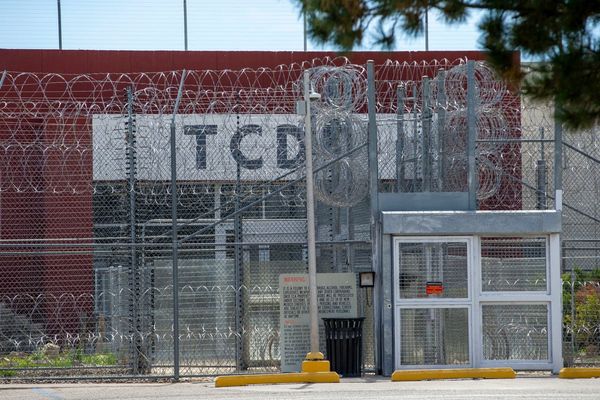/Tesla%20Inc%20logo%20by-%20baileystock%20via%20iStock.jpg)
Tesla (TSLA) has long been considered a bellwether of innovation. But 2025 is shaping up to be one of the electric vehicle (EV) maker’s most challenging years in recent memory, with its stock facing significant volatility. While Tesla’s rebound from its April lows briefly offered some relief to investors, Wells Fargo analyst Colin Langan has recently issued a grave warning: Tesla could post its first year of negative free cash flow since 2018.
In a recent research note, Langan pointed to multiple headwinds dragging on Tesla’s financial health, including weak delivery numbers, risks to income from regulatory credits, aggressive capital expenditures, and pricing pressures. That’s a sharp reversal from the narrative of financial resilience that Tesla has leaned on in the past, and it casts a shadow over investor hopes that its Robotaxi and Optimus initiatives will materialize fast enough to justify the current sky-high valuation.
In this article, we will dig deeper into the risks outlined in Wells Fargo’s note to help investors decide whether TSLA stock remains a viable investment or a potential risk to their portfolios. With that, let’s get into it!
About Tesla Stock
Tesla (TSLA) is a prominent innovator dedicated to accelerating the global transition to sustainable energy. The Elon Musk-led powerhouse designs, develops, manufactures, leases, and sells high-performance fully electric vehicles, solar energy generation systems, and energy storage products. It also offers maintenance, installation, operation, charging, insurance, financial, and various other services related to its products. In addition, the company is increasingly focusing on products and services centered around AI, robotics, and automation. Its market cap currently stands at $1.04 trillion.
Shares of the EV maker have slumped 12.8% on a year-to-date basis. TSLA stock had a rough start to 2025, tumbling from mid-January highs near $430 per share to a low of $218.80 by early April.
The stock was weighed down by slowing EV sales, CEO Elon Musk’s controversial political activities, and escalating U.S.-China trade tensions. TSLA stock found support around the $220 level as broader market sentiment steadied following President Donald Trump’s decision to pause or reduce most of his tariffs. From a technical analysis standpoint, some traders interpret the price action as forming a triple bottom pattern, while others see an inverse head and shoulders pattern. The price then broke above the slice neckline in late April, climbing as high as $362.89. The upward move was fueled by several factors, including the U.S.-China trade truce, Musk’s pledge to step back from U.S. politics and refocus on Tesla, and renewed investor enthusiasm over the company’s self-driving advancements. However, the positive momentum has since faded, with TSLA shares pulling back and experiencing a sharp drop in early June amid the Trump-Musk feud. As tensions between Trump and Musk eased, the stock staged a modest rebound and has since been trading within a narrow range.
Wells Fargo Warns TSLA’s Free Cash Flow Is Under Threat
In a note last week, Wells Fargo analyst Colin Langan warned that Tesla’s fundamentals are deteriorating, raising concerns about the strength of its core auto business and resulting free cash flow (FCF). Langan said that the company’s full-year FCF might turn negative for the first time since 2018. The firm reiterated its “Underweight” rating on Tesla stock and a $120 price target.
The bank expects a sharp drop in Tesla’s vehicle deliveries, stating, “We now expect FY deliveries down 21% y/y,” while also noting that “Q2 deliveries look ~flat vs. a weak Q1.” Langan said that to meet the Q2 consensus forecast of 411,000 vehicles, Tesla would need a massive “>50% m/m jump in deliveries” in June. Notably, Wells Fargo’s Q2 delivery forecast for Tesla is approximately 343,000 units — about 17% below the consensus estimate. The analyst added, “We recently flagged Q2 deliveries aren’t showing signs of recovery.”
Indeed, Tesla’s sales during the first two months of Q2 continued to disappoint. For instance, Tesla’s U.S. sales declined 16% year-over-year in April, even after the Model Y refresh in March. Also, Tesla’s sales in Germany dropped 36.2% year-over-year in May. In addition, Tesla’s sales in the U.K. slumped by over 45% in May, and sales in Italy declined by 20%, despite overall EV market growth in both countries. Finally, Tesla’s sales in China dropped 15% year-over-year in May to 61,662 units, highlighting its continued loss of market share to local rivals, particularly BYD (BYDDY).
“New Model Y appears weak given inventory building & promotions. There is also no update on the affordable model, the only driver of 2H volumes,” Langan wrote in a note to clients. “Order px [pricing] is ~stable, though financing promos & inventory discounts continue. We expect lower margin q/q due to px.”
Meanwhile, regulatory credits, which were once a vital driver of Tesla’s earnings, have now become a potential risk factor. Langan said the Senate’s recent vote to strip California of its authority to regulate air pollution was “game over” for the state’s regulatory board, known as CARB. The vote effectively eliminates the requirement for automakers to purchase zero-emission vehicle (ZEV) regulatory credits from companies like Tesla to offset their CO2 emissions. “CARB’s end also implies >10% EBIT risk from ZEV credits,” the analyst noted, estimating that these credits make up roughly half of Tesla’s total regulatory credit income. The state of California has filed a lawsuit against the federal government in an effort to restore the ruling.
The analyst also said that Tesla’s aggressive capital expenditure plan, exceeding $11 billion for 2025, further contributes to the concerns. As a result of lower deliveries, lower EV credits, pricing pressures, tariffs, and aggressive capital expenditures, Wells Fargo projects a full-year FCF burn of $1.9 billion — Tesla’s first negative FCF since 2018.
Wells Fargo believes there could also be potential headwinds related to the company’s Robotaxi. “The FSD testing in Austin seems to be [within] a limited range, at low speed & heavily supervised. We see a risk of ramping up too quickly as an accident would be a major setback,” Langan said. Still, bulls like Dan Ives of Wedbush and Adam Jonas of Morgan Stanley see Tesla’s FSD and robotaxi service as the gateway to unlocking trillions in potential value.
Finally, Wells Fargo continues to express concerns about Tesla’s valuation. “The stock trades at a staggering 172x consensus ’25 EPS & >400x our ’25 EPS,” Langan said, cautioning that Tesla’s growth outlook remains negative with “no sign of inflection.” In my previous articles on TSLA, I raised similar concerns. The company’s P/E multiple was sky-high even when TSLA stock was trading near its April lows. Of course, I understand that Tesla’s current valuation is largely fueled by investor optimism around future breakthroughs, but personally, I find it difficult to justify such a premium for a company whose core business continues to struggle.
What Do Analysts Expect for TSLA Stock?
Unsurprisingly, the Wall Street analyst community remains cautious on TSLA stock, with recommendations varying widely among those covering the company. While 14 analysts rate the stock as a “Strong Buy” and two as a “Moderate Buy,” 15 suggest holding, and 10 assign a “Strong Sell” rating. Overall, TSLA stock has a consensus “Hold” rating. Notably, the stock currently trades at a premium compared to its mean price target of $292.03.
Analysts tracking the company project a 30.9% year-over-year drop in its EPS to $1.41 for 2025, while revenue is expected to remain largely unchanged year-over-year at $97.54 billion. Over the past 90 days, Tesla has seen 32 downward EPS revisions and no upward revisions, along with 41 downward revenue revisions and none to the upside, signaling weakening fundamental momentum. In Q1, the company pulled its full-year guidance, citing economic uncertainty and its impact on the business, and said it would “revisit” its 2025 outlook during the Q2 update.







